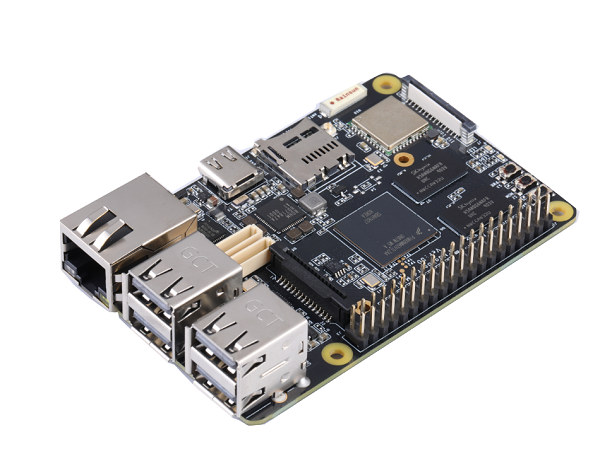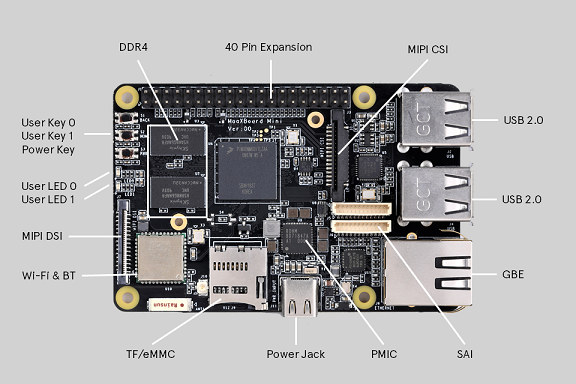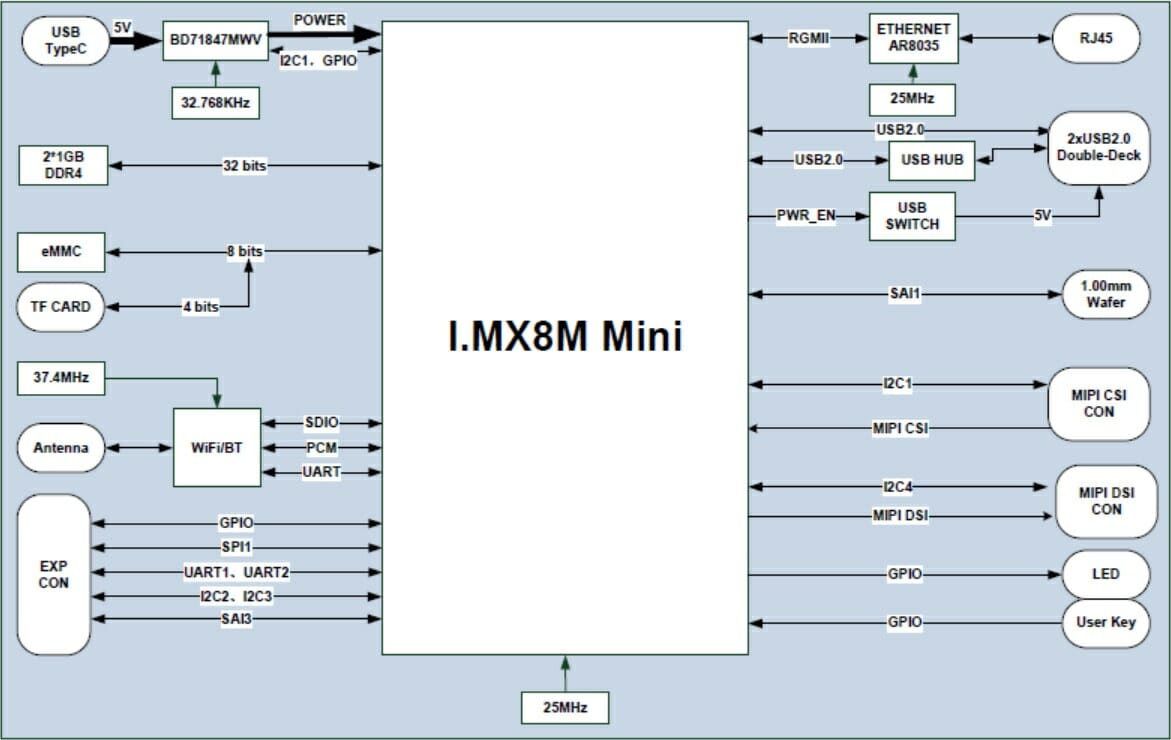Last year, Embest – an Avnet company – introduced MaaXBoard NXP i.MX 8M SBC mostly compatible with Raspberry Pi form factor and running Android 9.0 or Yocto Linux.
The company has now launched MaaXBoard Mini with a 14nm NXP i.MX 8M Mini quad-core processor. In some ways, the new board follows more closely Raspberry Pi 3 Model B form factor with four USB 2.0 ports, instead of the two USB 3.0 ports found in the first version of the board, but it does so without HDMI output, leaving MIPI DSI as the only option for display output.

- SoC – NXP i.MX 8M Mini Quad with 4x Arm Cortex-A53 cores @ up to 1.8GHz, Cortex-M4F real-time core @ 400MHz, Vivante GCNanoUltra 3D GPU and GC320 2D graphics, 1080p H.264/H.265 VPU;
- System Memory – 2GB DDR4
- Storage – eMMC socket for up to 64GB flash, MicroSD slot
- Display Interface – MIPI DSI
- Camera Interface – MIPI CSI
- Audio – SAI via GPIO connectors
- Connectivity
- Gigabit Ethernet port
- 802.11ac WiFi 5 and Bluetooth 4.2 with on-board ceramic antenna, u.FL connector for external antenna
- USB – 4x USB 2.0 host ports, 1x USB Type-C port for 5V power input only
- Expansion
- 40-pin Raspberry Pi-compatible GPIO header with I2C, SPI, UART, I2S, SAI, GPIO, etc.
- 8-bit and 7-bit GPIO connectors including one with SAI audio.
- Misc – Power and 2x user buttons, 2x user LEDs, heatsink
- Power Supply – 5V/3A via USB Type-C; PMIC and voltage regulators
- Dimensions — 85 x 56mm
- Temperature Range – 0 to 70°C
- Certifications – FCC, CE and RoHS

MaaxBoard Mini supports Yocto built Debian 10 and Android 9.0 images with Linux 4.14.98 kernel, as well as Windows 10 IoT Core operating system.
The board targets Human-Machine Interaction (HMI) solutions, family entertainment, building automation, education, machine vision, medical imaging, and generic embedded computing platforms.
MaaxBoard Mini SBC is available now for $72.50 on Avnet or Embest store. More details may be found about the product page that also links accessories to such a MIPI CSI Camera Module, a MIPI DSI display, and Monarch Go Pi HAT adding LTE Cat M1 cellular connectivity to the board.
Via LinuxGizmos

Jean-Luc started CNX Software in 2010 as a part-time endeavor, before quitting his job as a software engineering manager, and starting to write daily news, and reviews full time later in 2011.
Support CNX Software! Donate via cryptocurrencies, become a Patron on Patreon, or purchase goods on Amazon or Aliexpress





